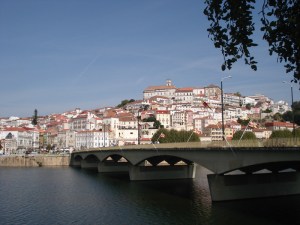6 Fantastic Things to Do in Coimbra
Guide to the Top Things to Do in Coimbra, Portugal: Discovering the Historic Heart of Portugal
Coimbra, a city brimming with history, culture, and timeless charm, is an essential stop on any trip to Portugal. Known as the ancient capital of Portugal, Coimbra offers a unique blend of attractions that seamlessly combine the old and the new. Whether you’re planning a day trip or an extended stay, this guide will help you uncover the best things to do in Coimbra, Portugal, and ensure you make the most of your visit.
Why Coimbra Should Be Your Next Destination
If you’re wondering what to do in Coimbra, you’re about to discover a treasure trove of experiences that will captivate history buffs, culture enthusiasts, and casual travelers alike. Coimbra is not just a city; it’s a journey through time. As you wander through its narrow streets, you’ll feel the echoes of its past as Portugal’s medieval capital and a hub of learning. This is a city where history is not just preserved but lived daily.
The Rich History and Culture of Coimbra
1. University of Coimbra: A UNESCO World Heritage Site
One of the top things to see in Coimbra is undoubtedly the University of Coimbra. Founded in 1290 and one of the oldest universities in Europe, this prestigious institution is not just a place of learning but a symbol of the city’s rich academic tradition. The University of Coimbra offers more than just educational value—it is a living museum. The Joanina Library, with its stunning Baroque architecture, is a must-visit. Here, you’ll find over 60,000 ancient books, and if you’re lucky, you might even spot the resident bats that help protect these valuable tomes from insects.
But the university is more than its library. Explore St. Michael’s Chapel, where the grandeur of Portugal’s religious history is on full display, and climb the University Tower for panoramic views of the city that will leave you breathless. A visit to the university is not just what to do in Coimbra; it’s an immersion into the heart of Portuguese culture and heritage.
Pro Tip: Plan your visit in the morning to avoid crowds, and don’t miss the Academic Prison, where students were once detained for disciplinary reasons—an intriguing part of the university’s history.
2. The Old Cathedral (Se Velha): A Medieval Masterpiece
Another must-see in Coimbra is the Old Cathedral or Se Velha. This Romanesque cathedral, built in the 12th century, is a stunning example of medieval architecture. As you approach, you’ll notice the intricate carvings on the facade, blending Romanesque and Islamic influences—a nod to the diverse cultural heritage of the Iberian Peninsula. Inside, the cathedral’s austere beauty is complemented by a Gothic cloister, where you can enjoy a moment of peaceful reflection.
Visiting during the Queima das Fitas, or Burning of the Ribbons, is a unique experience. This traditional festival marks the end of the academic year and features Fado performances in front of the cathedral, providing an authentic taste of Coimbra’s student life.
Did You Know? The cathedral’s cloister is one of the oldest in Portugal, initiated in 1218, making it a significant site for those interested in religious history.
3. Monastery of Santa Clara-a-Velha: A Tale of Resilience
Located near the Mondego River, the Monastery of Santa Clara-a-Velha tells a story of resilience. Originally built in the 14th century, this Gothic monastery suffered from frequent flooding, eventually leading the nuns to relocate to the newly built Monastery of Santa Clara-a-Nova on higher ground. Today, the ruins of Santa Clara-a-Velha offer a fascinating glimpse into the architectural and religious history of Coimbra.
The site has been meticulously restored, and a modern interpretation center provides insight into the monastery’s history and the life of Queen Saint Isabel, who is closely associated with its founding.
Tip for Visitors: Combine your visit with a stroll along the nearby Mondego River for a peaceful retreat from the bustling city center.
4. Explore Arco de Almedina: The Gateway to Old Coimbra
One of the most iconic Coimbra attractions is the Arco de Almedina. This ancient gateway is the entrance to the old city and is a remnant of Coimbra’s medieval walls. The arch, originally part of the city’s defenses, dates back to the 9th century and was later modified during the 12th century. Above it sits the Torre de Anto, which offers a small exhibition on the history of Coimbra.
Walking through the Arco de Almedina is like stepping back in time. As you pass under the arch, you’ll find yourself in a labyrinth of narrow streets, lined with shops and cafes, leading up to the hill where the university sits. It’s the perfect starting point for exploring Coimbra’s historical center.
 5. Portugal dos Pequenitos: Fun for the Whole Family
5. Portugal dos Pequenitos: Fun for the Whole Family
For a unique experience, visit Portugal dos Pequenitos, especially if you’re traveling with children. This theme park, one of the oldest in Portugal, features miniature replicas of the country’s most famous monuments and traditional Portuguese houses. It’s a delightful way to learn about Portuguese history and culture in a fun, interactive setting.
Wander through this whimsical park and explore the miniature versions of landmarks like the Tower of Belem and the Jeronimos Monastery. It’s an educational experience that’s enjoyable for both adults and kids, making it a great family activity in Coimbra.
Insider’s Tip: Visit early in the day to avoid crowds and take your time exploring each area. The park is also an excellent spot for taking memorable photos.
6. Fado ao Centro: Immerse Yourself in the Soul of Portugal
No visit to Coimbra is complete without experiencing Fado, the traditional Portuguese music that expresses the soul’s deepest emotions. Fado ao Centro is the perfect place to experience this hauntingly beautiful music. Performed by students and alumni of the University of Coimbra, Fado ao Centro offers nightly performances in an intimate setting.
The Coimbra style of Fado is distinct from that of Lisbon, with a more academic and solemn tone. Listening to Fado in Coimbra is a moving experience that connects you to the city’s rich cultural heritage.
When to Go: Performances typically begin at 6 p.m., so plan your evening accordingly to include this unforgettable cultural experience.
Desire: Planning Your Ideal Trip to Coimbra
Now that you know what to see in Coimbra, it’s time to start planning your visit. Whether you have a day or several days to explore, Coimbra offers something for every traveler.
How Long to Spend in Coimbra?
To fully appreciate all that Coimbra has to offer, plan to spend at least two days in the city. This will give you enough time to explore the major attractions without feeling rushed. If you’re wondering what to do in Coimbra for a day, focus on the university, the old cathedral, and a Fado performance to get a well-rounded experience.
Where is Coimbra Located?
Coimbra is strategically located in central Portugal, making it easily accessible from both Lisbon and Porto. It’s about 205 kilometers (127 miles) from Lisbon and 125 kilometers (77 miles) from Porto, making it a perfect destination for a day trip or a short stay as you travel between Portugal’s major cities.
How to Get to Coimbra from Lisbon
The most convenient way to reach Coimbra from Lisbon is by train. The journey takes about two hours, and trains run frequently throughout the day. Make sure to get off at Coimbra B station, from where you can take a taxi or a short walk into the city center.
For those driving, Coimbra is well-connected by road, and the drive from Lisbon takes around two hours via the A1 motorway. But the problem is to park the car!
Read more: How can I get to Portugal?
 Make Coimbra Your Next Travel Adventure
Make Coimbra Your Next Travel Adventure
Coimbra, with its rich history, stunning architecture, and vibrant cultural scene, is a destination that should not be missed. Whether you’re exploring the ancient university, marveling at the medieval cathedral, or losing yourself in the soulful melodies of Fado, Coimbra promises an unforgettable experience.
Start planning your trip today and discover why Coimbra is one of Portugal’s most cherished cities. Whether you’re interested in Coimbra’s things to do, learning about its academic history, or simply soaking in its unique atmosphere, Coimbra offers something for every traveler.
Book your trip now and experience the magic of Coimbra, Portugal’s ancient capital, where history and culture come alive.
Additional Tips for Your Coimbra Adventure
- Best Time to Visit: The best time to visit Coimbra is during the spring and fall when the weather is mild and the tourist crowds are smaller.
- Local Cuisine: Don’t miss trying local delicacies such as Leitão (roast suckling pig) and Pastéis de Santa Clara, a traditional Portuguese pastry.
- Accommodation: Coimbra offers a range of accommodations from budget hostels to luxury hotels. Consider staying near the historic center for easy access to the city’s top attractions.
Make Coimbra a key part of your Portuguese adventure and explore the city that has played a vital role in the country’s history for centuries. From its ancient university to its rich cultural traditions, Coimbra is a city that captivates and inspires.
How do you pronounce Coimbra?
To help you pronounce the Portuguese cities. We chose this fantastic video made by the Portuguese Lab.

